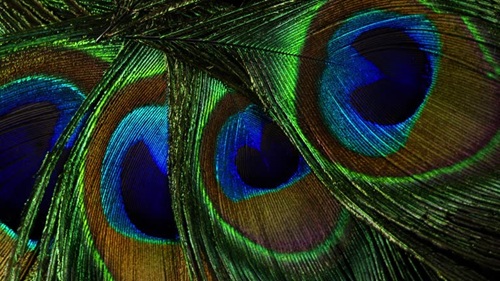The peacock feather has been revered in Indian culture for centuries. Considered a symbol of beauty, grace, and divinity, it is closely associated with Lord Krishna, who is often depicted wearing a feather in his crown. Genuine peacock feathers are not only visually stunning but are also believed to carry spiritual significance, bringing positive energy, peace, and protection to the home.
However, due to rising demand, the market today is filled with fake or synthetic peacock feathers made from plastic, dyed fabric, or artificial materials. These replicas may look attractive but lack the natural charm and benefits of the original. To ensure authenticity, it’s important to know how to identify an original peacock feather.

Observe the Natural Colors
The most striking feature of a peacock feather is its iridescent color pattern, especially the famous “eye” design at the tip. Genuine feathers display natural shades of blue, green, and golden hues that change slightly when viewed from different angles. Fake feathers often use paint or artificial dye, giving them a dull or overly bright appearance with no natural color shift.
Check the Texture
Original peacock feathers are soft and delicate to the touch. The tiny strands (called barbs) are flexible and flow naturally when you move your hand across them. Fake feathers, on the other hand, may feel stiff, plasticky, or rough, as they are usually made of synthetic fibers or plastic materials.
Look at the Eye Pattern
The eye-shaped pattern at the tip is the most recognizable part of the feather. On genuine feathers, the circle is well-defined, symmetrical, and has a metallic shine. The colors inside the eye appear layered, with deep blue at the center surrounded by shades of turquoise and bronze. Fake feathers often have uneven, poorly painted, or printed eye designs that lack clarity and shine.
Smell Test
Since original feathers come from birds, they may carry a faint natural or earthy smell. Synthetic feathers usually have a chemical or plastic-like odor due to dyes and artificial materials used in manufacturing.
Flexibility Test
Peacock feathers are naturally lightweight and flexible. You can gently bend them, and they will return to their original shape without breaking easily. Artificial feathers tend to be either too rigid (if made of plastic) or too fragile (if made from cheap cloth).
Stem Examination
The stem (also called rachis) of an authentic feather is thin, hollow, and smooth. It has a natural brownish shade and is lightweight. Fake feathers often have thick, heavy, or painted stems that look unnaturally glossy.
Price and Source
Authentic peacock feathers are not excessively expensive, but they are also not sold dirt-cheap. If you find a seller offering a bunch of feathers at unusually low prices, they are likely fake. Always buy from trusted spiritual shops, handicraft stores, or reputed online platforms to ensure you’re getting the real ones.
Legal Note
In India, the hunting or harming of peacocks is illegal, as the peacock is the national bird of India. However, collecting naturally shed feathers is allowed. Genuine sellers source feathers ethically, while fake sellers may not disclose the origin at all.
Conclusion
Identifying an original peacock feather is all about checking its color, texture, eye design, flexibility, and stem quality. Genuine feathers are naturally iridescent, soft, and perfectly patterned, while fake ones often look artificial, stiff, or overly bright.
When buying, always choose trusted and ethical sources, as genuine peacock feathers are not only beautiful but also carry spiritual symbolism in Indian culture. A true feather can bring charm, positivity, and a touch of tradition to your home.